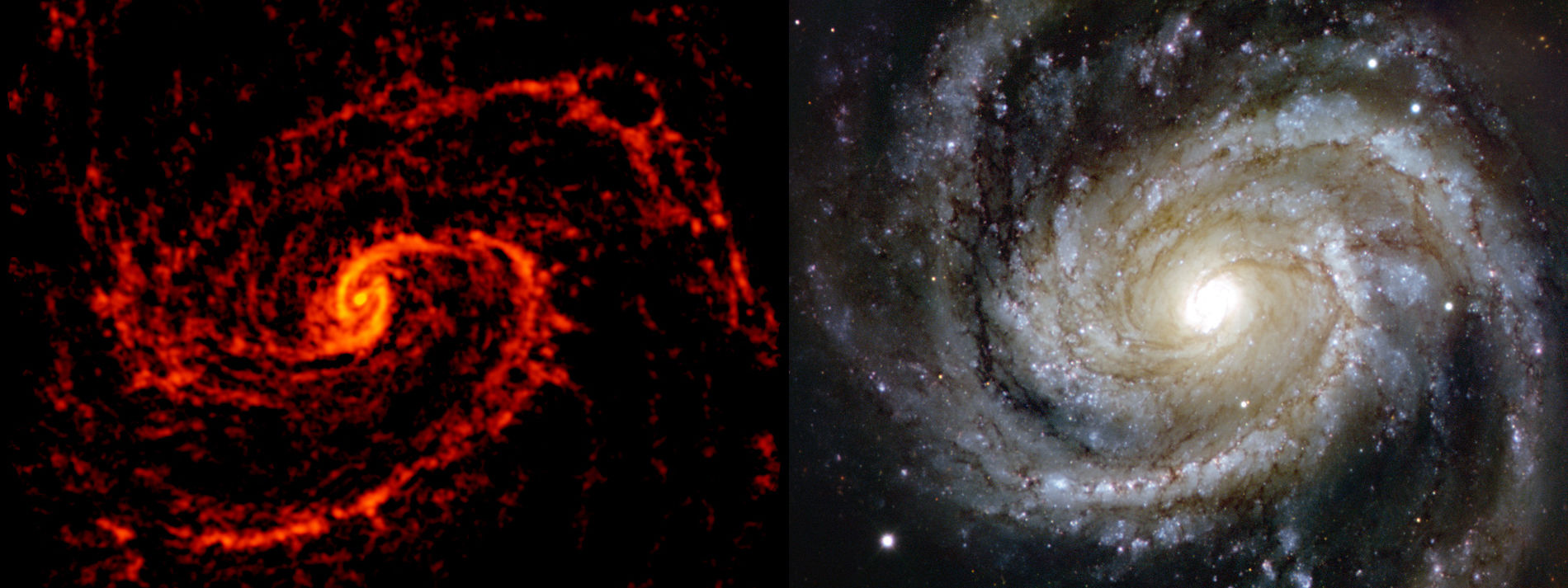ALMA sees 100,000 stellar nurseries in nearby galaxies

On small scales, astronomers understand how stars are born.
You start with a nebula — a big cloud of gas and dust — and compress it somehow. Maybe it collides with another cloud, or a nearby star explodes, or a massive nearby star slams it with its powerful solar wind. Then physics takes over, with the cloud (or parts of it) collapsing down, flattening out, then forming a disk with a star (or multiple stars) in the middle. Eventually the center gets dense and hot enough to start fusing hydrogen into helium. A star is born.
Now, you may sense I’m skipping over some important parts, which is fair. The point is, although a lot of details are complex and not well understood, the overall process is.
But if you take a step back, it turns out there are still some big gaps. On a large scale — on a galactic scale — how does this whole star-making thing work?
That’s a little harder. Some galaxies make lots of stars (we call them starburst galaxies) and some are slower but steady (like the Milky Way)… while others hardly make any at all. Why is that?
To get a better grip on this big question, astronomers have turned to the Atacama Large Millimeter/submillimeter Array (ALMA), which observes light intermediate between far infrared and radio waves. Lots of molecules in space emit at these wavelengths, including those commonly found in star-forming nebulae. A new project, called Physics at High Angular Resolution in Nearby GalaxieS (or PHANGS, haha), is looking at 74 nearby galaxies to map out these gas clouds, in hopes of determining why some galaxies are more fecund than others.
The goal: To map out at least 300,000 individual star nurseries in these galaxies.
Wow.
They’ve chosen mostly face-on spiral galaxies in the southern skies (ALMA is in the Atacama desert in Chile); these are also easily observed using big optical telescopes to help map out the nebulae, including the Very Large Telescope (also in Chile) and Hubble (which is occasionally above Chile, but also lots of other places since it’s in space and all).
They’re looking specifically at carbon monoxide (CO), which is a simple molecule abundant where stars are born. It also loves to emit light at the wavelength ALMA sees, so it’s a perfect match. The astronomers want to map the locations, brightness, small-scale features, and velocities of the gas clouds, tying them to larger features in the galaxies. A huge survey like this is needed, so that they can compare all these features and try to see trends. If you only do this for a few galaxies, one or two might be weird and throw you off, or a weak trend might be hidden in the statistical noise.
What they hope to find is correlations between things like how a galaxy rotates, the number density of nebulae in the galaxy, and the velocity of the galaxy’s rotation with the nebulae properties like the rate at which they form stars. Hopefully, trends will pop up that will make it easier for us to understand why some galaxies love making stars, and others not so much.
They’ve observed 100,000 nebulae so far, and to give you a sense of scale (though to be honest it crushes mine) about 30,000 of these nebulae so far are about the same size as the Orion Nebula. So, yeah.
I love stuff like this: Big, splashy projects that are looking at the big (or even huge) picture, as opposed to drilling down to figure out specific objects. Don’t get me wrong, I love both! But there’s something about tackling a big issue, something we don’t understand because we just haven’t opened our field of view enough, haven’t looked at enough objects in enough detail and then just stepped back to take in the overview.
You have to so this sometimes to understand what’s going on a larger scale, to answer the fundamental questions the Universe posits.
On a cosmic scale, how are stars born? Why here and not there?
Soon, hopefully, we’ll know.






























